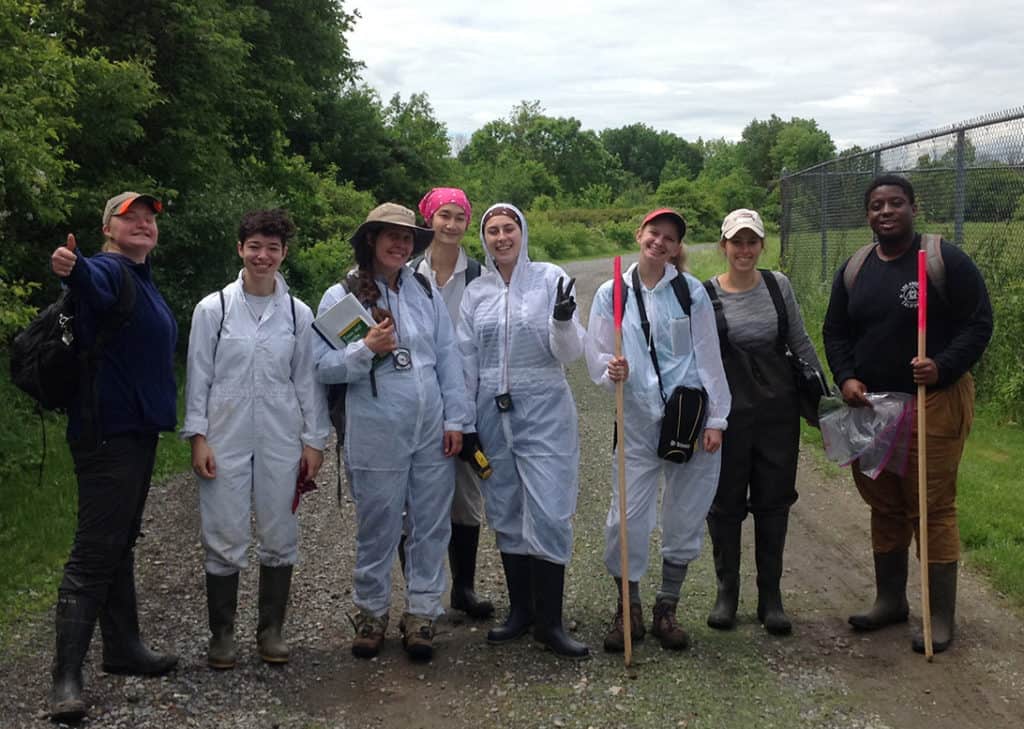Internship Highlights

Take a look at the work done by some of our past interns!
Haley Cubell helped research plant/pollinator associations as part of a pilot inventory of floral resources at Vassar College. She also developed a repertoire of botanical drawings for a floral resource calendar. Stay tuned for the end result of Haley’s work!
Matea Mezic, Ray Cagnetta, Kristiana Bowman, Alex Sams and Luke Arsenault helped pilot an inventory of floral resources at Vassar College. Their work will help create guidelines for the management of pollinator habitat at Vassar and across the wider EMMA network. Click here to learn more about the pilot. Click here to view results.
Dale Wang, Louisa Kuper, Joey Boots-Ebensfeld and Rachel Strout collected phenology observations at Vassar College and took photographs on the trail. Their data will be used by researchers across the nation to explore the relationship between changing climates and the environment, and their photos will be used for environmental education.
As part of their phenology observations and natural history education, Joey Boots-Ebensfeld and Rachel Strout created wonderful photographic journals on topics that they they took interest in. Click here to see Joey’s journal on wildlife, signs and tracking. Click here to see Rachel’s journal on fungi along Vassar’s phenology trail. These journals will be used as educational resources, and may serve as references for future monitoring initiatives.
Fate Syewoangnuan and Mirit Rutishauser adapted a method of vegetation mapping for the Vassar Farm Ecological Preserve. Using this method, they were able to reclassify land composition and determine dominant plant species in each region of the preserve. Sampling was aided by a team of six other interns and staff members. In the future, we hope to use this method of vegetation mapping at our other EMMA sites to observe long term changes in ecological structure. Click here to learn more about the pilot. Click here to view results.
Catherine Belleza analyzed the urban-rural gradient of our region by adding layers of land usage and development over the Hudson Valley. She also evaluated the land cover around each EMMA site to quantify levels of development within a one mile buffer. Catherine’s research will be used with EMMA to help extrapolate differences in our data based on levels of urbanization in and around each site. Click here to see her work.

